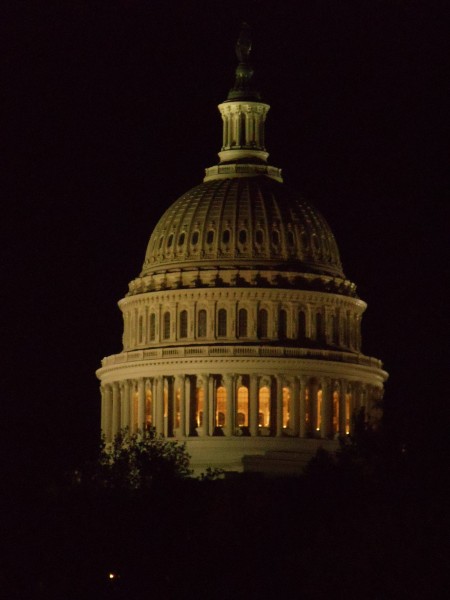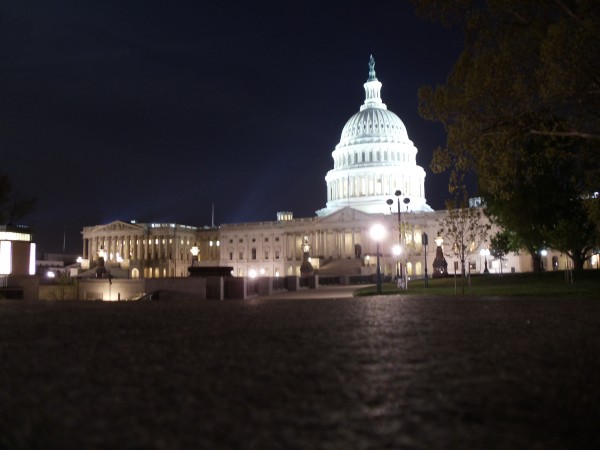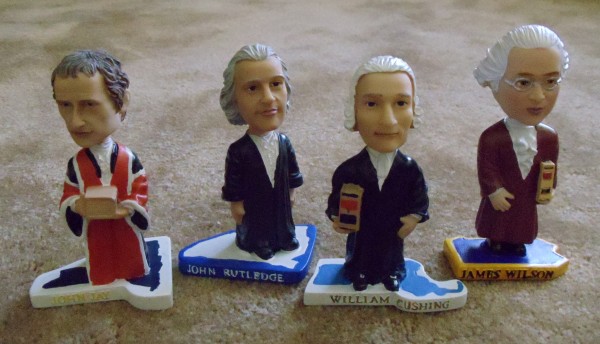(Just started reading? See part 1, part 2, part 3, and part 4.)
After much line-standing, it was now time to hear actual argument.
For a number of reasons, I’m not going to go into much detail. First, I was pretty sleep-deprived. While I did a reasonable job of concentrating on the arguments, my mind sometimes just wasn’t capable of keeping up with the discussion out of sheer exhaustion. This also means my memory of the arguments is spotty and may have forgotten particular interesting exchanges. Second, while I read petitioner/respondent briefs for both cases, quickly skimmed the United States’s briefs in both, and read a couple amicus briefs of particular interest in Microsoft v. i4i, I’m far from expert in either area of law, so anything I say isn’t going to be the best-informed commentary. Third, if you want full detail, you can always read transcripts and listen to audio (simultaneously, even, thanks to The Oyez Project) from the oral arguments for Tapia v. United States and for Microsoft v. i4i. (Count your blessings: until Chief Justice Roberts joined the Court in 2005, transcripts and audio weren’t released until the end of the term, around the end of June. The Court then started releasing transcripts shortly after argument. And until this year, with very rare exceptions, they didn’t release oral argument audio until the end of the term, whereas now it’s released at the end of the week the argument occurs.)
For the most part, then, I’ll limit discussion to the impressions that stuck with me. Due to lack of time I haven’t gone over the argument transcripts, so this is all raw recollection diluted by a week’s delay in scribing.
General thoughts
The justices sit in high-backed chairs that appear very solemn, rigid, and somber. They are that — when nobody’s sitting in them and testing them. It turns out the chairs recline quite considerably, which diminishes their impressiveness a bit. 🙂 Justice Thomas and Justice Scalia sit next to each other in this iteration of the Court (the chief justice sits in the center, and the remaining justices alternate sides in order of seniority, so they sat on opposite sides before Justice Kagan joined the Court), and they had a tendency to lean back so far in the chairs that the sense of dignity the chairs conveyed was rather disrupted. 🙂 Not that it really makes any difference, of course: they are who they are. Still, it was kind of funny to see that the chairs’ veneer of gravitas wasn’t as deep as the angle they reclined.
Justice Thomas is frequently noted as remaining unusually silent on the bench. At the moment he hasn’t spoken in oral argument in just over five years — to counsel making argument, that is. From time to time he and Scalia would turn their chairs and confer with each other, as a lawyer for one side or the other continued his argument, presumably discussing the case being argued. His involvement’s certainly not passive even if that involvement includes none with counsel making an argument. This is about what I’d read various places before going to argument.
Justice Ginsburg is definitely the most frail-looking justice. Even taking into account her physical position, she seemed to look downward at counsel more than appeared to be necessary, and she seemed to hunch over the presumed papers in front of her when asking questions. The other justices had a physical presence of sorts which Justice Ginsburg seemed to lack. (Again, not that it makes any real difference, she being who she is.)
Some people question the importance of oral argument, suggesting that the written briefs settle the issue, the justices have already made up their minds, and so on. Among the usual arguments against this is that the justices use argument as a sounding board to figure out what their fellow justices think and to in a sense passively-aggressively make their cases to each other. If that happened here, I didn’t have the Court-reading experience to see it, or perhaps these cases were simply not clear-cut enough for it to happen in any obvious way.
Tapia v. United States
Justice Sotomayor asked a number of questions, at various points in the argument, which essentially took the point of view of a district court judge tasked with sentencing. Her questions seemed to suggest that she thought judges should have sentencing discretion to consider rehabilitation programs for the defendant’s own good. She was a trial judge at one time, as I recall, and I found it interesting that, for the first time I can recall reading, (dare I say it?) empathy due to her past experience as a trial judge seemed to strongly affect her approach to a case. I also found it interesting because from what I can remember, historically her position has been generally pro-defendant, and (facially) this sympathy for the judge would run counter to that.
Justice Scalia, well known as an advocate of textualism, repeatedly questioned about how a judge could “recognizing that imprisonment is not an appropriate means of promoting correction and rehabilitation” while lengthening a sentence to rehabilitate. As I recall he drew a laugh once for suggesting a judge could “recognize”…and then say he was going to give a longer sentence anyway. He seemed to find the statutory text pretty clear.
I have no strong memories of the questions and answers of the other justices (save Justice Thomas, who asked no questions), although I’m sure on reading the oral argument transcript more memories would spring to mind.
Microsoft v. i4i
The very first thing I noticed about this case was that, in the very brief recess between this case and Tapia, Chief Justice Roberts had disappeared. This was expected: he’d recused himself because, as I recall, his family owns Microsoft stock. At the same time his disappearance was so abrupt that I didn’t even see him leave, despite making half an effort to watch and see it happen (because I was wondering if the other justices would rearrange their seating around Justice Scalia, who acted as chief justice for the argument).
I found this argument more technical and peppered with citations than the previous one, which made it harder to follow. The justices spent some time talking about RCA v. Radio Engineering Laboratories, Inc., the opinion in which Justice Cardozo made perhaps the strongest statements supporting the clear and convincing standard of proof. It was more time than I’d have expected, given the other opinions that could have been discussed as well.
At one point one counsel cited an opinion made by then-Judge Alito when he had been judge in a lower (circuit, I think?) court. I’m not certain, but I suspect it was the same side that had also cited an opinion of his in their brief. I had to read briefs containing bald assertions that previous cases cut in exactly opposite directions, and skeptic that I was at the time, I found this good for a laugh when reading that brief. Justice Alito seemed to think similarly, as he immediately made a self-deprecating comment about how he wasn’t nearly as smart at the time, or something to that effect. However, I don’t remember thinking he was seriously hinting which way he was leaning in doing so.
When oral argument in Microsoft finished (Microsoft’s counsel still had rebuttal time, as I noticed because the white light on the podium had turned on [indicating five minutes remaining] but the red light [indicating no time] had not), my mind felt overwhelmed with what I’d seen and heard. I knew I’d followed less than half of what had been said, yet at the same time I knew I’d basically achieved my goal: to know enough to be dangerous while hearing the arguments.
Next time, reading the Court’s tea leaves.



